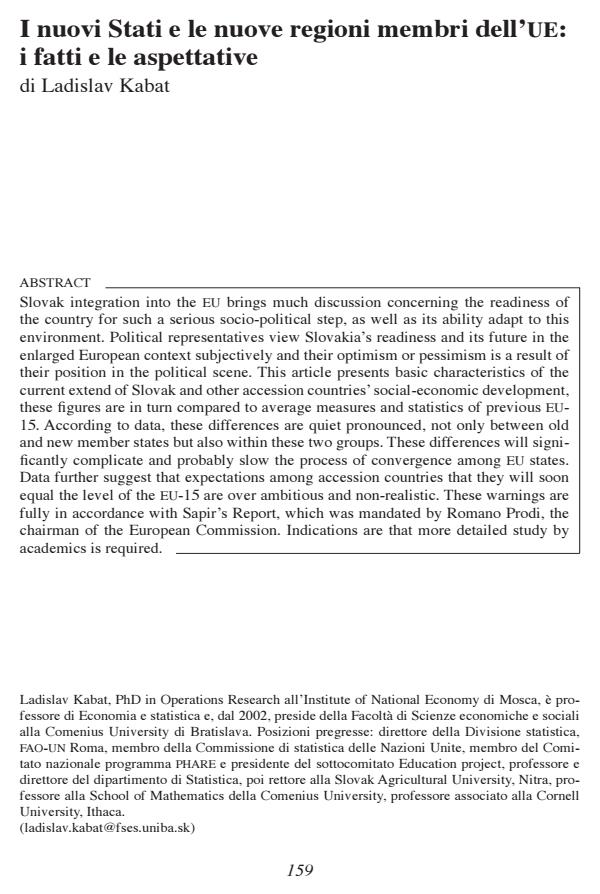I nuovi Stati e le nuove regioni membri dell'UE: i fatti e le aspettative
Journal title ECONOMIA PUBBLICA
Author/s Ladislav Kabat
Publishing Year 2005 Issue 2005/4
Language Italian Pages 9 P. File size 651 KB
DOI
DOI is like a bar code for intellectual property: to have more infomation
click here
Below, you can see the article first page
If you want to buy this article in PDF format, you can do it, following the instructions to buy download credits

FrancoAngeli is member of Publishers International Linking Association, Inc (PILA), a not-for-profit association which run the CrossRef service enabling links to and from online scholarly content.
Slovak integration into the EU brings much discussion concerning the readiness of the country for such a serious socio-political step, as well as its ability adapt to this environment. Political representatives view Slovakia’s readiness and its future in the enlarged European context subjectively and their optimism or pessimism is a result of their position in the political scene. This article presents basic characteristics of the current extend of Slovak and other accession countries’ social-economic development, these figures are in turn compared to average measures and statistics of previous EU- 15. According to data, these differences are quiet pronounced, not only between old and new member states but also within these two groups. These differences will signi- ficantly complicate and probably slow the process of convergence among EU states. Data further suggest that expectations among accession countries that they will soon equal the level of the EU-15 are over ambitious and non-realistic. These warnings are fully in accordance with Sapir’s Report, which was mandated by Romano Prodi, the chairman of the European Commission. Indications are that more detailed study by academics is required.
Ladislav Kabat, I nuovi Stati e le nuove regioni membri dell'UE: i fatti e le aspettative in "ECONOMIA PUBBLICA " 4/2005, pp , DOI: